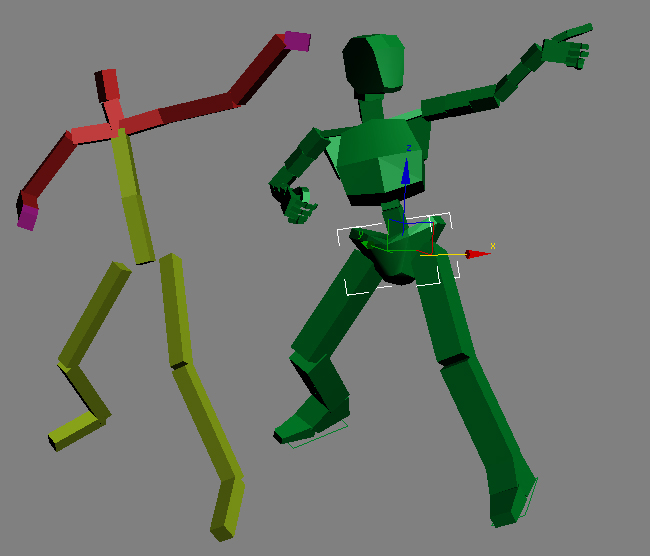You load motion-capture data into the Layer Manager in much the same way as any other keyframe data. Once the motion-capture data is loaded, all the same keyframe-editing tools are available to transform, edit, duplicate, and retime the motion data. You can then use all the layering tools to edit the motion-capture data in a nondestructive way.

CAT supports loading data from BVH and HTR motion-capture file formats, as well as importing motion from character studio BIP files.
The process has two stages: importing the motion data into a separate hierarchy in Max, and then mapping the animation data from the hierarchy onto the CATRig using Capture Animation.
Each format has its own importer. Once the data is imported the mapping is all handled by the Capture Animation utility, which automatically maps the data onto your character and allows you to edit the mapping if required.
Once data is imported you can use the Layer Transform Gizmo to easily transform the whole clip/layer and Adjustment layers to enable you to tweak to the animation.
You can import HTR and BVH motion-capture files into CAT using the same method. The respective importer opens the file as a hierarchy of Box primitives with keyframes. You use the Capture Animation tool to map this motion onto your CATRig.
CAT can import motion from BIP (character studio Biped)files onto CATRigs. This is not the same as importing the original BIP file. You are not loading in the original keyframes.
The Capture Animation tool allows you to transfer animation from any hierarchy or collection of objects in Max onto a CATRig. Its purpose is to “capture” animation data from any animation hierarchy onto a CATRig. While Capture Animation is part of the import process, you can use the utility separately, externally to the motion capture process.
CAT uses retargeting to calculate pelvis positioning and defaults to FK rotations for the rest of the body.